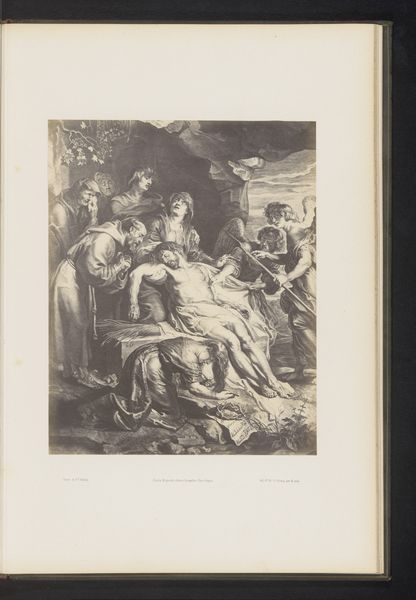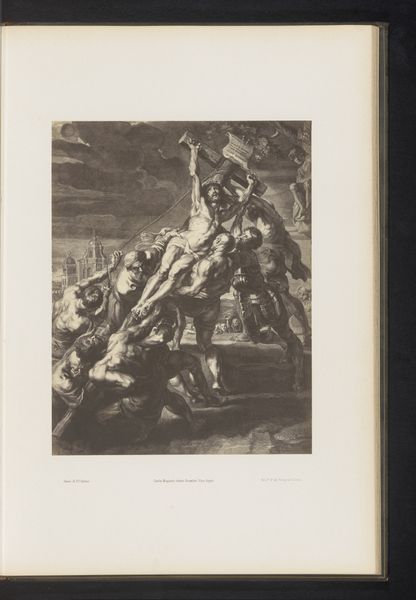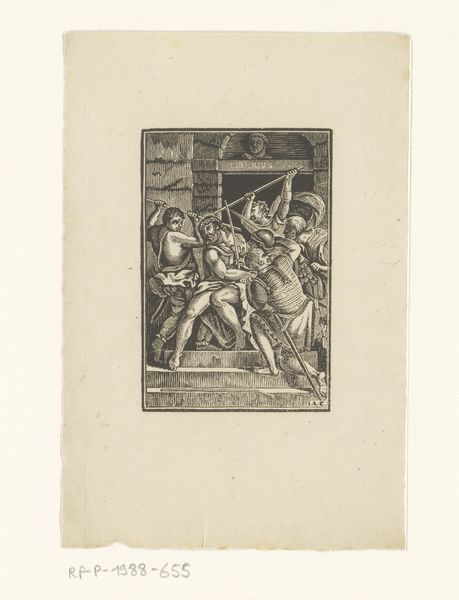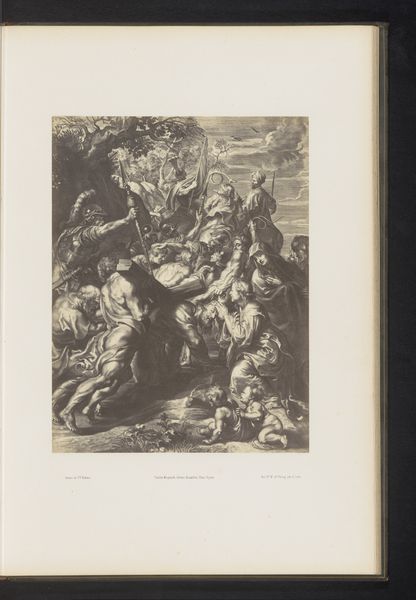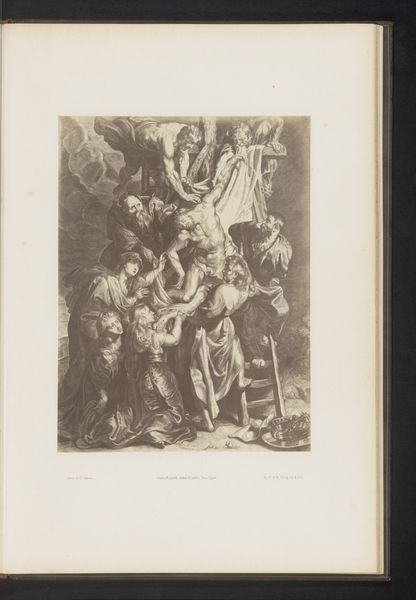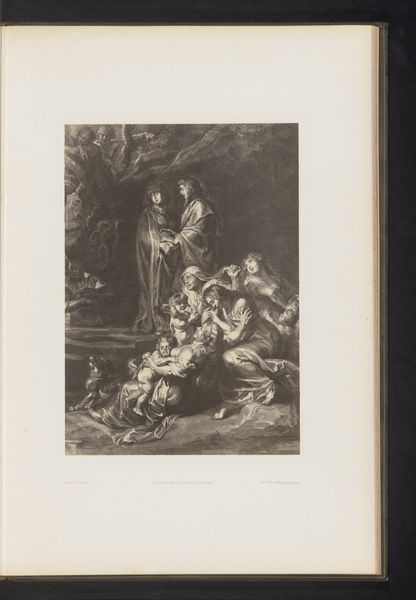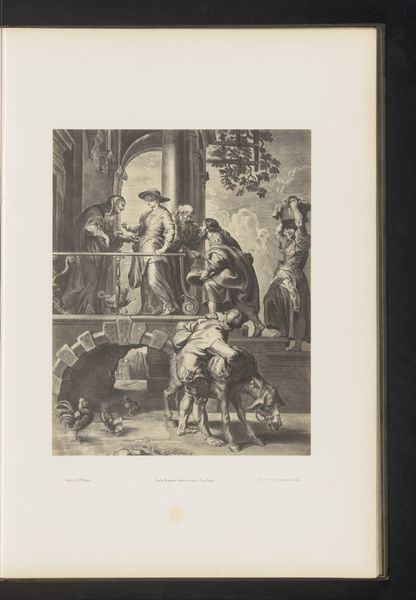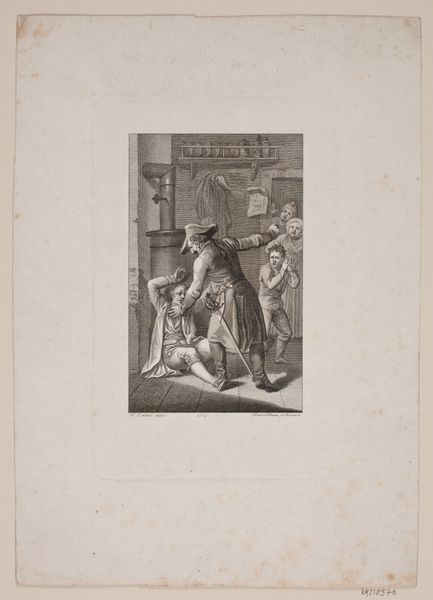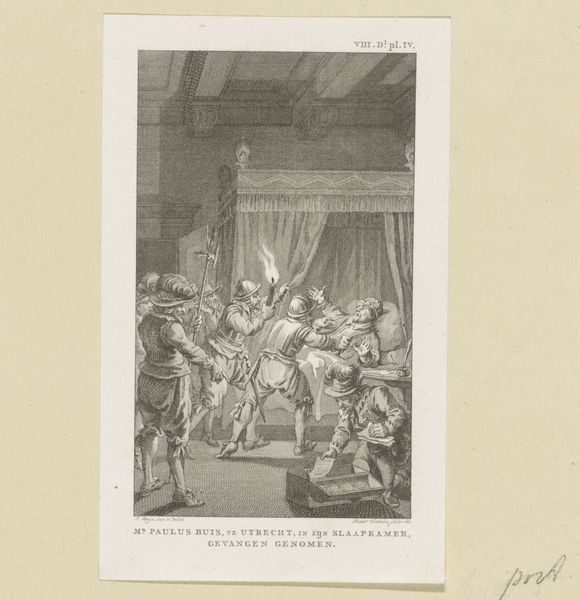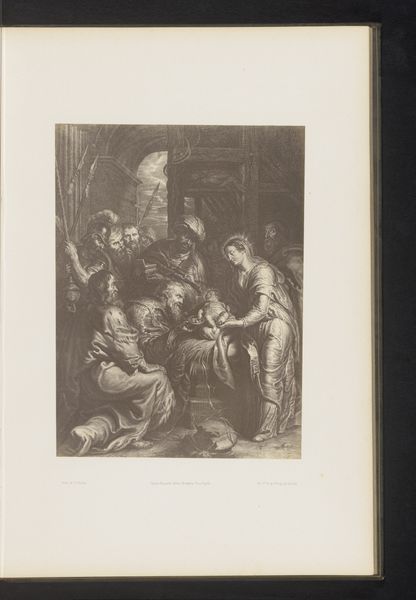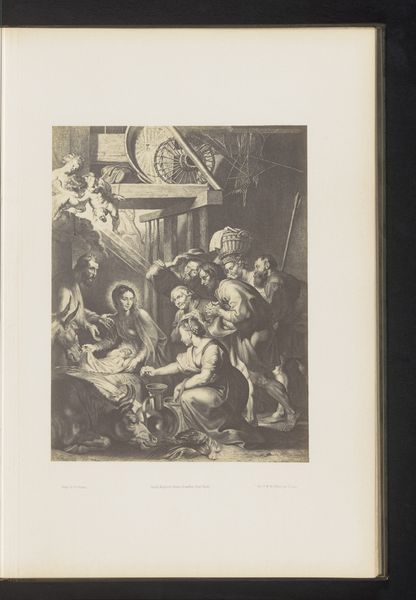
Fotoreproductie van een gravure van De geseling van Christus door Paulus Pontius, naar het schilderij door Peter Paul Rubens before 1858
0:00
0:00
#
pencil drawn
#
photo of handprinted image
#
aged paper
#
toned paper
#
pale palette
#
ink paper printed
#
white palette
#
unrealistic statue
#
tonal art
#
watercolor
Dimensions: height 268 mm, width 212 mm
Copyright: Rijks Museum: Open Domain
Curator: This compelling piece is a photomechanical reproduction of an engraving of "The Flagellation of Christ," initially rendered by Paulus Pontius after Peter Paul Rubens’s original painting. This copy dates to before 1858. Editor: What strikes me immediately is the brutal composition. The off-white tone of the paper heightens the stark contrast of the dark ink, lending a violent urgency to the scene. Curator: The political context of such images is critical; the dissemination of religious iconography was heavily controlled and influenced by patrons. Note the Roman architectural setting. These are explicit cues tying religious authority to classical empires. Editor: Focusing on form, I find the swirling dynamism characteristic of the Baroque period. Rubens’s influence is obvious in the pronounced musculature and dramatic torsion of the figures. Notice how the engraver captures the texture of the flesh and the sharp edges of the architecture. Curator: It is vital to observe how a print, as a reproducible medium, transforms the function of painting. Prints democratized religious imagery, allowing for the wide dissemination of devotional subjects and propaganda that would be available for private devotion outside of a church. Editor: Let's observe the emotional impact. Christ's submissive posture is in contrast to the active gestures of his torturers, producing a clear binary between the sinful and the sacred. It's emotionally stirring and deeply unbalanced. Curator: Absolutely, but it is the market, public sentiment, and socio-political structures that define such interpretations. Prints like these participated in cultivating piety but also social order. Editor: I appreciate, then, the stark materiality – how the reproductive nature of this print makes us consider what it means to circulate images of power, in a network, not just see something beautiful hanging in a chapel. Curator: Indeed, a layered artifact showing us its historical agency in communicating faith and power.
Comments
No comments
Be the first to comment and join the conversation on the ultimate creative platform.

